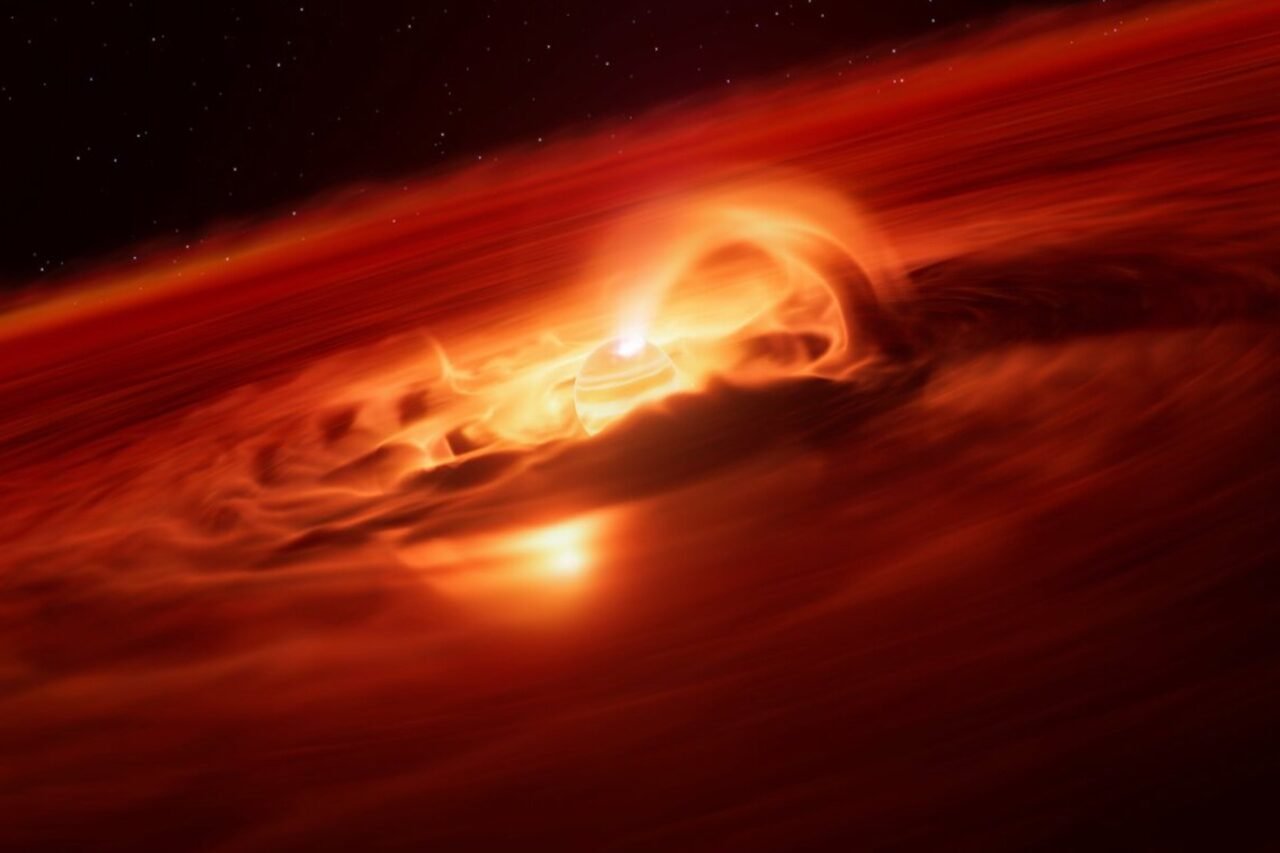Astronomers have made a groundbreaking discovery of a rogue planet, designated Cha 1107-7626, located approximately 620 light-years away in the Chameleon constellation. This planet is currently undergoing a remarkable growth spurt, consuming gas and dust at an extraordinary rate of 6 billion tons per second. The findings were published in a recent paper in The Astrophysical Journal Letters, marking the strongest growth rate ever recorded for any planetary body.
Rogue planets, by definition, float freely through space, unattached to any star. Their formation can occur in one of two ways: they may either be ejected from a star system or emerge independently from the remnants of a gas and dust cloud. Despite their isolation, many of these planets retain a disc of material around them, which they can feed on during their formative years.
Unprecedented Accretion Rates
Cha 1107-7626 is in its early formation stages and has shown an impressive increase in its accretion rate. Astronomers observed that by August, the planet was gathering material at a rate nearly eight times faster than just a few months earlier. Víctor Almendros-Abad, an astronomer at the Astronomical Observatory of Palermo and lead author of the study, remarked, “This is the strongest accretion episode ever recorded for a planetary-mass object.”
This discovery challenges the conventional view of planets as stable entities, revealing instead that these free-floating bodies can exhibit dynamic behaviors. The growth of Cha 1107-7626 is particularly notable given its mass, which is estimated to be between five to ten times that of Jupiter.
The research team also noted that the planet’s magnetic activity might play a key role in its rapid accretion. This activity appears to facilitate a high influx of material into its surrounding disc. Surprisingly, the chemistry of the disc surrounding Cha 1107-7626 has also changed during the accretion process, with the detection of water vapor, a finding not observed previously. This behavior is typically associated with stars, suggesting that even planetary objects with lower mass can possess magnetic fields strong enough to influence their accretion rates.
Implications for Planetary Science
The implications of this discovery are profound. Amelia Bayo, an astronomer at the European Southern Observatory and a co-author of the study, expressed her excitement, stating, “The idea that a planetary object can behave like a star is awe-inspiring and invites us to wonder what worlds beyond our own could be like during their nascent stages.”
As scientists continue to explore the cosmos, findings like those surrounding Cha 1107-7626 expand our understanding of planetary formation and evolution. The study not only highlights the fascinating dynamics of rogue planets but also raises new questions regarding the nature of planetary systems and the potential for life elsewhere in the universe.
